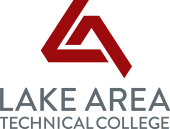What is Physical Therapy?
Physical therapy as a profession began with the need to assist soldiers who were returning from World War I. Groups of women (and a few men) were trained as “reconstruction aides” to help these men recover from their battle wounds. The polio epidemic of the 1950’s further revealed physical therapy as a critical component of restorative healthcare.
Physical Therapists (PTs) and Physical Therapist Assistants (PTAs) utilize numerous tools to help patients recover from/live with the effects of strokes, heart attacks or diabetes mellitus. They also work with people who have been injured in motor vehicle accidents, falls, or sporting activities. Exercise is the most important tool used to help patients optimize their functional independence. The use of modalities such as hot or cold packs, paraffin wax, ultrasound, traction or water can help reduce pain, muscle spasms and/or immobility. Physical Therapists and Physical Therapist Assistants primarily assess a patient’s weaknesses, develop their strengths, and enable them to live as fully and comfortably as possible.
In addition to working with patients who have lost function, PTs and PTAs work with people to prevent injury and loss of independence. This might include promoting healthy lifestyle choices, developing work stations to decrease work injuries, or helping athletes safely improve their performance.
Physical Therapists and Physical Therapist Assistants work with people of all ages in a variety of settings, including hospitals, skilled nursing facilities, outpatient clinics, rehabilitation hospitals, schools and homes. This allows for some specialization to occur, such as pediatrics, geriatrics, sports medicine, women’s health, orthopedics and neurology, to name a few. The majority of professional PTs and PTAs, however, will be asked to be generalists.



